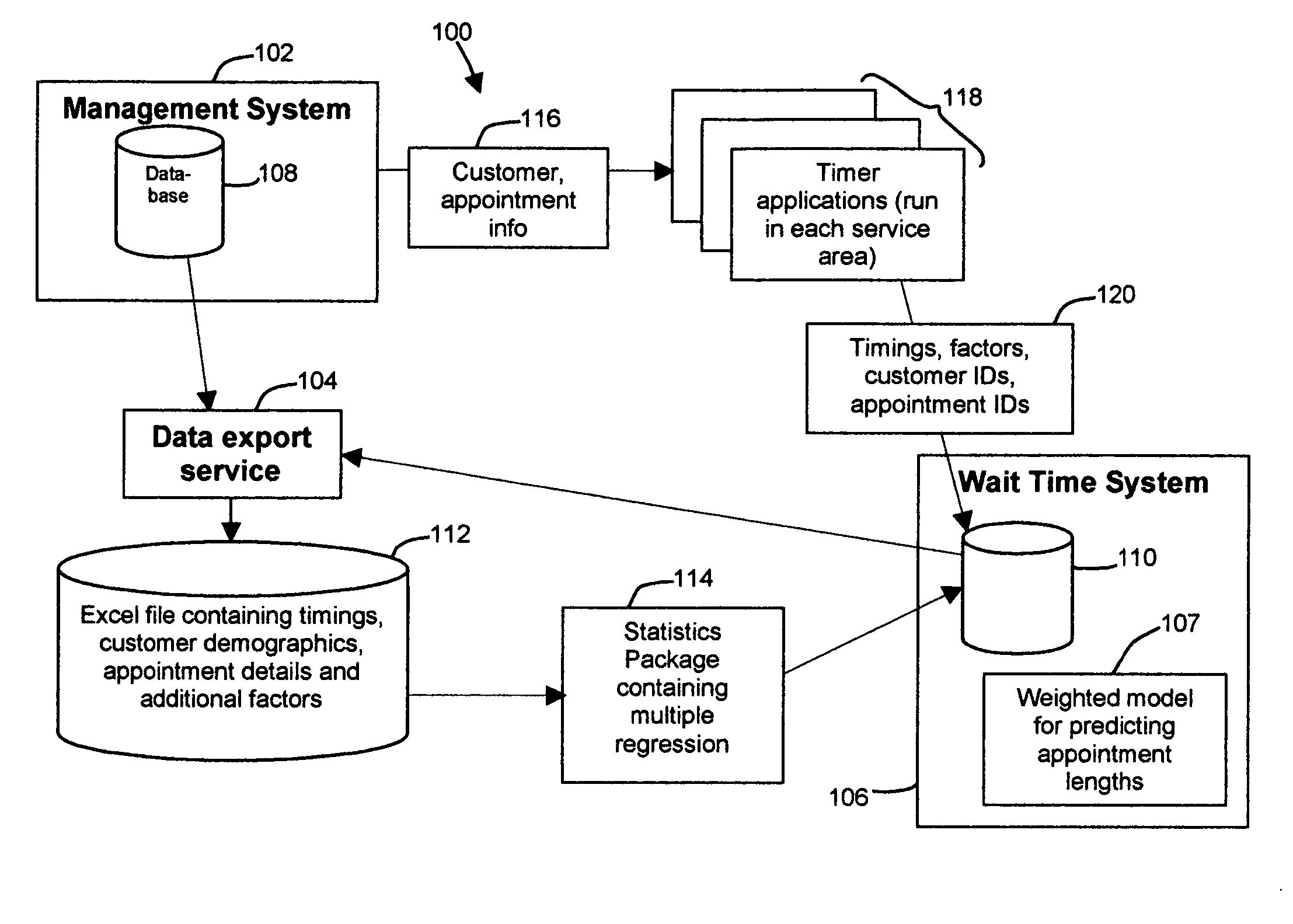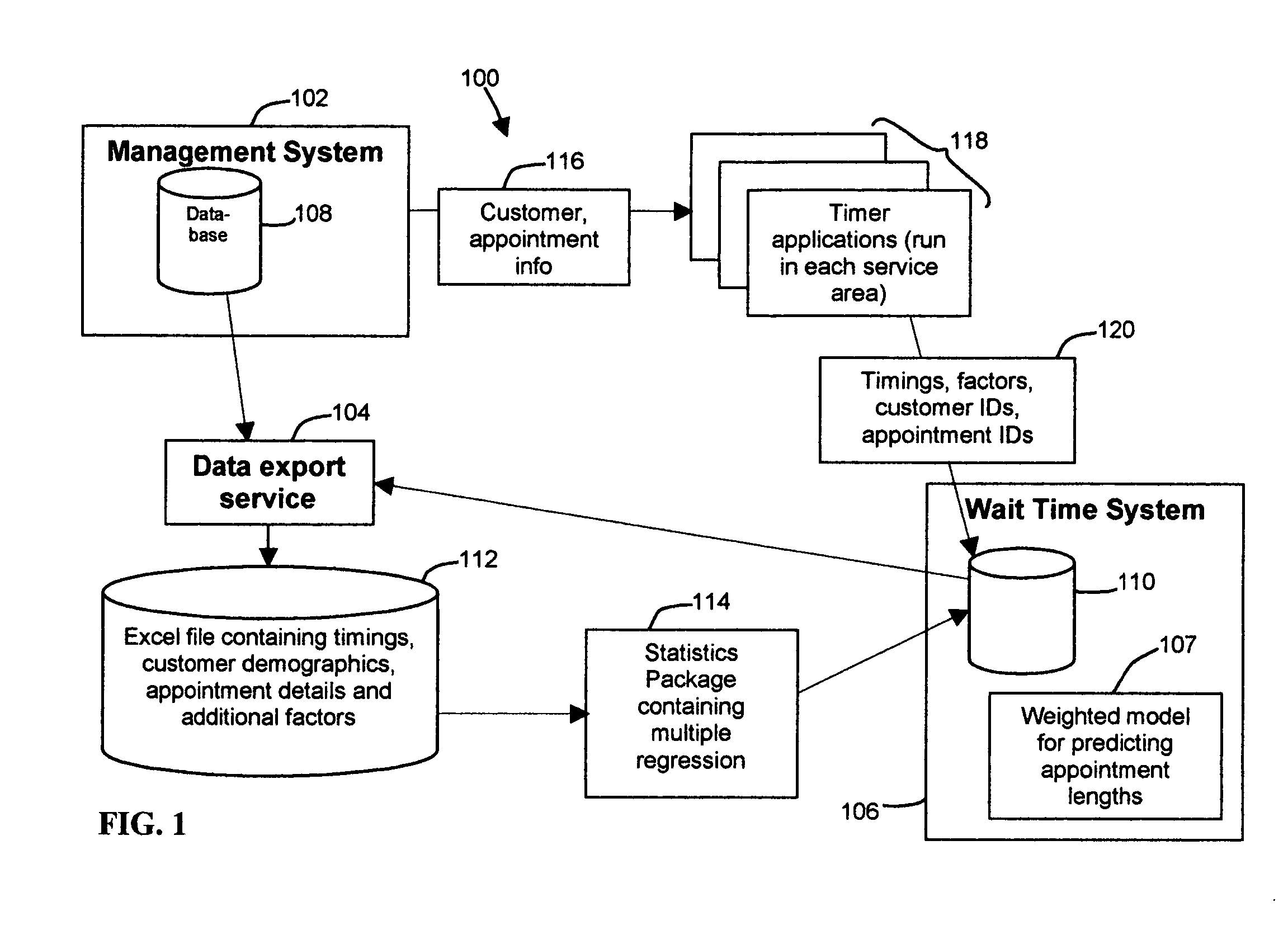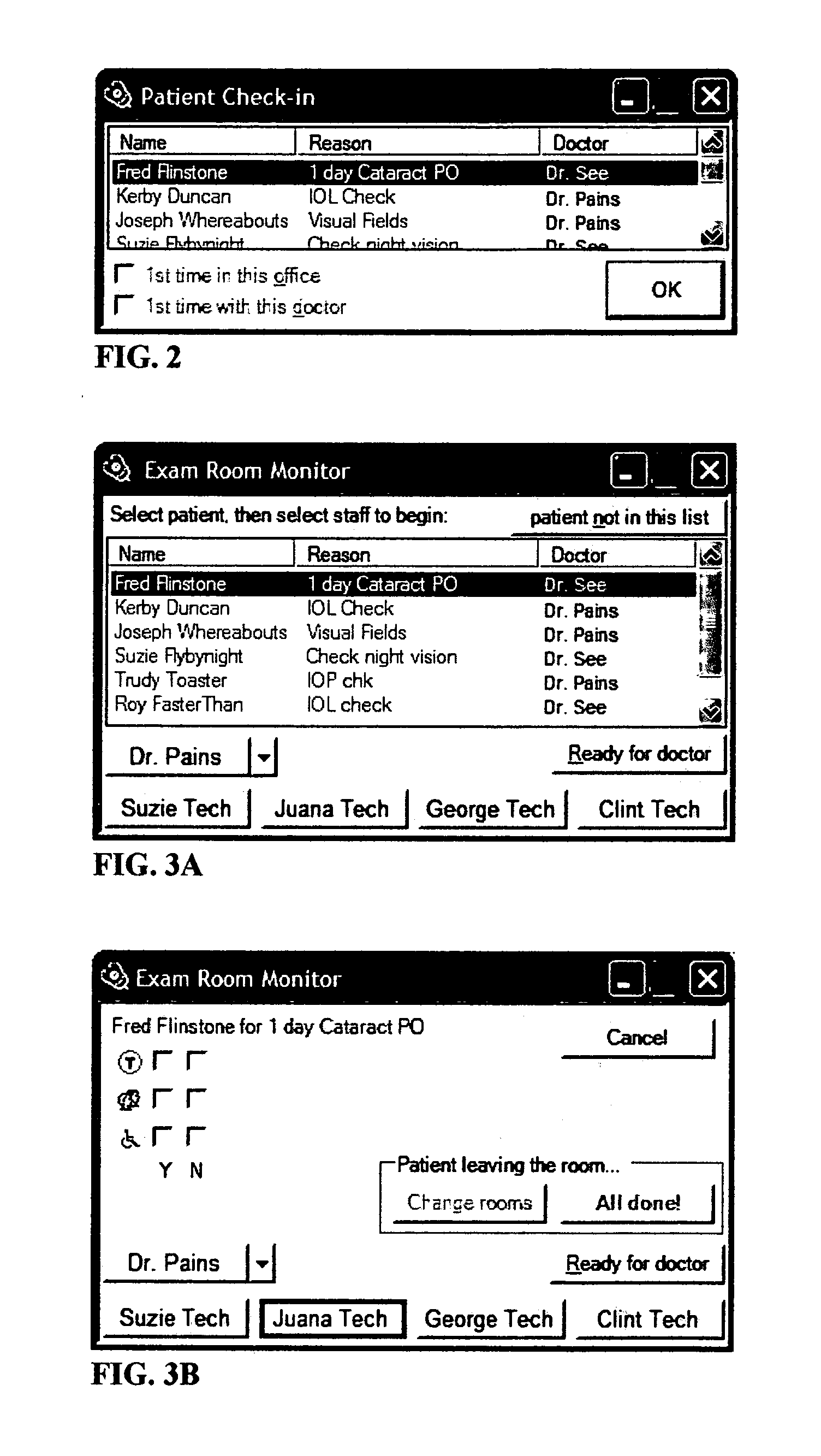Method and apparatus for customer scheduling to reduce wait times and increase throughput
a technology of customer scheduling and throughput, applied in the field of methods and apparatus for scheduling, can solve the problems of increasing the workload of staff, and affecting the efficiency of the service, so as to achieve the effect of increasing customer throughpu
- Summary
- Abstract
- Description
- Claims
- Application Information
AI Technical Summary
Benefits of technology
Problems solved by technology
Method used
Image
Examples
Embodiment Construction
[0121] The following detailed description will be made in the context of the broad steps of a method. It will be understood that the steps of the method described can be accomplished by means of a conventional computer system, including a display device. The broad steps are: Gather Data, Create a Baseline, Build the Weighted Statistical Model, Develop Appointment Groups, Develop a Schedule Template, Test the Template, Refine the Template, and Schedule the Appointments.
Gather Data.
[0122]FIG. 1 is a block diagram of the system for data collection and model building. The system 100 includes a management system 102, a data export service 104, and a wait time system 106. The wait time system 106 includes a weighted statistical model 107 for predicting appointment lengths. Respective databases 108 and 110 in the management system 102 and the wait time system 106 are made available to the data export service 104. The data export service 104 produces a file 112 (such as an Excel file) th...
PUM
 Login to View More
Login to View More Abstract
Description
Claims
Application Information
 Login to View More
Login to View More - R&D
- Intellectual Property
- Life Sciences
- Materials
- Tech Scout
- Unparalleled Data Quality
- Higher Quality Content
- 60% Fewer Hallucinations
Browse by: Latest US Patents, China's latest patents, Technical Efficacy Thesaurus, Application Domain, Technology Topic, Popular Technical Reports.
© 2025 PatSnap. All rights reserved.Legal|Privacy policy|Modern Slavery Act Transparency Statement|Sitemap|About US| Contact US: help@patsnap.com



